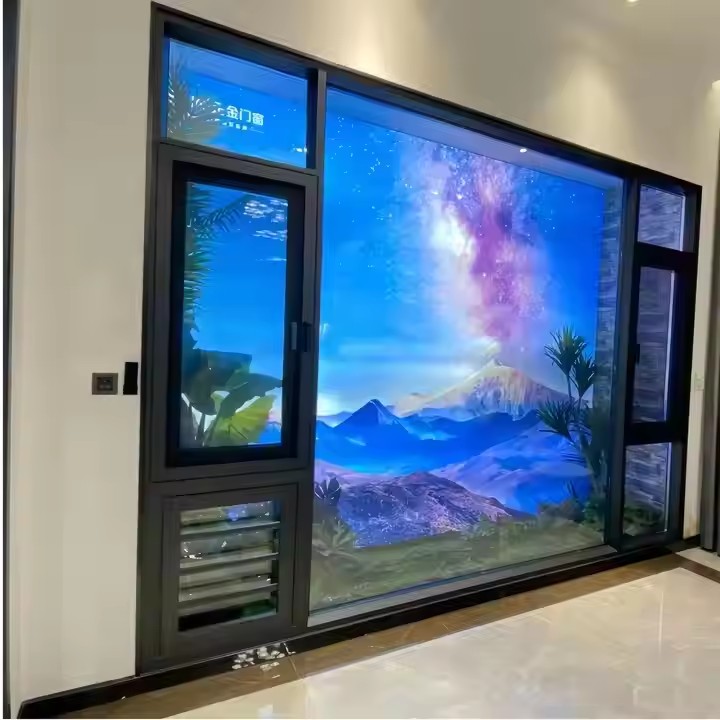Sun – shading and Heat – insulation Functions
Choose Appropriate Sun – shading Materials: The fabric of the sunshade should have good sun – shading performance. For example, choose PVC – coated polyester fiber, acrylic fabric, etc. These materials can effectively block ultraviolet rays, and the sun – shading rate can reach over 90%. You can also choose materials with special heat – insulation coatings, which can reflect part of the heat and reduce the temperature under the sunshade. Select sun – shading materials that are sun – resistant and have a particularly strong protective function. Since the sunshade is exposed to the sun every day, if the material is ordinary, it is likely to be damaged easily. If you want the sunshade material to be solid and durable, try to use thickened or double – layer sun – shading materials. The double – layer is thicker and more sun – resistant, and it can withstand the scouring of rain even in heavy rain.
Increase the Sun – shading Area: According to the usage scenarios and needs, reasonably expand the coverage area of the sunshade. For example, in a courtyard, the sunshade can be extended from the house to the area of the leisure tables and chairs to ensure that people can be completely in the shade when they rest or have a meal outdoors. Choose a suitable sunshade according to the specific installation area. For instance, if it is installed in an outdoor park, or a small part under the eaves just to block the morning sun. And some sunshades are usually set up in outdoor cafes. So, such sunshades are designed to make up for the small indoor area. Generally, such sunshades should be designed to be retractable. In rainy weather, the business is usually carried out indoors, so the sunshade should be retracted to avoid damage from rain.

Adjustable Sun – shading Angle: Install adjustable – angle sunshade brackets or adopt a retractable sunshade structure. By adjusting the angle between the sunshade and the sunlight, it can better block the sun at different times and seasons. Generally, sunshades are adjustable and retractable, which is convenient to put away when not in use, helping to extend the service life.
Ventilation and Breathability Functions
Design Ventilation Openings: Set ventilation openings at the top or side of the sunshade to promote air circulation. You can use louver – style ventilation openings, which can not only ventilate but also block sunlight and rain to a certain extent.
Choose Breathable Materials: In addition to the main sun – shading fabric, breathable mesh fabrics and other materials can be selected for some non – critical parts to increase air circulation and reduce the feeling of stuffiness. Based on the selection of materials, choose those with breathability, so that consumers under the sunshade do not feel stuffy and can provide a more comfortable environment for consumers to communicate.
Install Exhaust Fans: For larger sunshades, such as those used in commercial places or large – scale outdoor activities, exhaust fans can be installed to strengthen air circulation and improve comfort. For large – area sunshades, installing exhaust fans can dissipate heat from the fabric material of the sunshade, making the temperature under the sunshade more comfortable.

Daylighting and Lighting Functions
Use Translucent Materials: In the design of the sunshade, appropriately use some materials with good light – transmittance, such as transparent PC boards, fiberglass, etc. This can not only ensure a certain sun – shading effect but also allow some light to pass through, providing natural daylighting.
Arrange Lighting Equipment: Install lighting fixtures inside or around the sunshade, such as LED light strips, wall lamps, chandeliers, etc., to meet the needs of night use. Choose lamps with waterproof and dust – proof functions to ensure safety and service life in outdoor environments.
Utilize Solar Lighting: Install solar panels on the top of the sunshade to collect solar energy and convert it into electrical energy to power the lighting equipment, which is both environmentally friendly and energy – saving.
Durability and Safety Functions
Select Robust Structural Materials: The brackets and frames of the sunshade should be made of high – strength materials, such as aluminum alloy, stainless steel, etc. These materials have good wind – resistance and corrosion – resistance, ensuring the stability of the sunshade under various adverse weather conditions.
Strengthen Fixing and Support: According to the size and weight of the sunshade, reasonably design the fixing and support methods. For sunshades installed on buildings, ensure a firm connection with the wall or roof; for free – standing sunshades, deep – buried foundations or counterweight – type bases can be used to increase stability.
Set up a Drainage System: To avoid damage to the sunshade caused by rainwater accumulation, consider the drainage problem in the design. Drainage grooves or pipes can be set at the edge of the sunshade to guide rainwater to the ground or the drainage system.

Other Functions
Add Storage Function: Set up storage space under the sunshade, such as installing wall cabinets, hanging racks, etc., to facilitate the storage of outdoor items such as tables, chairs, umbrellas, sports equipment, etc., saving space and making the environment neater.
Configure Audio Equipment: Install an audio system inside the sunshade so that people can enjoy music while resting and entertaining under the sunshade, enhancing the user experience.
Set up Charging Facilities: Set up power sockets or USB charging interfaces inside the sunshade to facilitate people to charge electronic devices such as mobile phones and tablets, meeting the needs of modern life.

